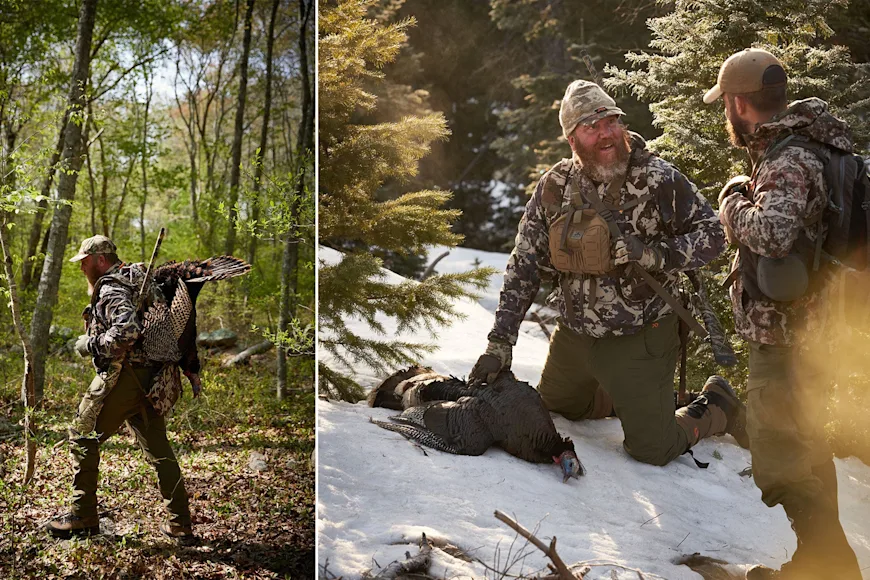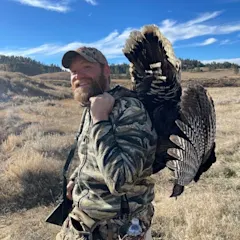Jesse Griffiths has a lot of irons in the fire. Based in Austin, Texas, the acclaimed chef and avid hunter owns a thriving restaurant called Dai Due, where he serves regional dishes prepared with locally sourced, hyper-seasonal ingredients—including wild hogs hunted in the Texas Hill Country. Dai Due, which Griffiths founded as a supper club in 2006, was recognized as a top restaurant in the country back in 2015 by Bon Appetit magazine. Since then, he’s emerged as one of the best wild game chefs in America.
As the author of the The Hog Book: A Chef’s Guide to Hunting, Cooking and Butchering Wild Hogs and the founder of the New School of Traditional Cookery, Griffiths teaches fellow hunters how to butcher and prepare their wild hogs for the table. And he’s passionate about sharing his skills.
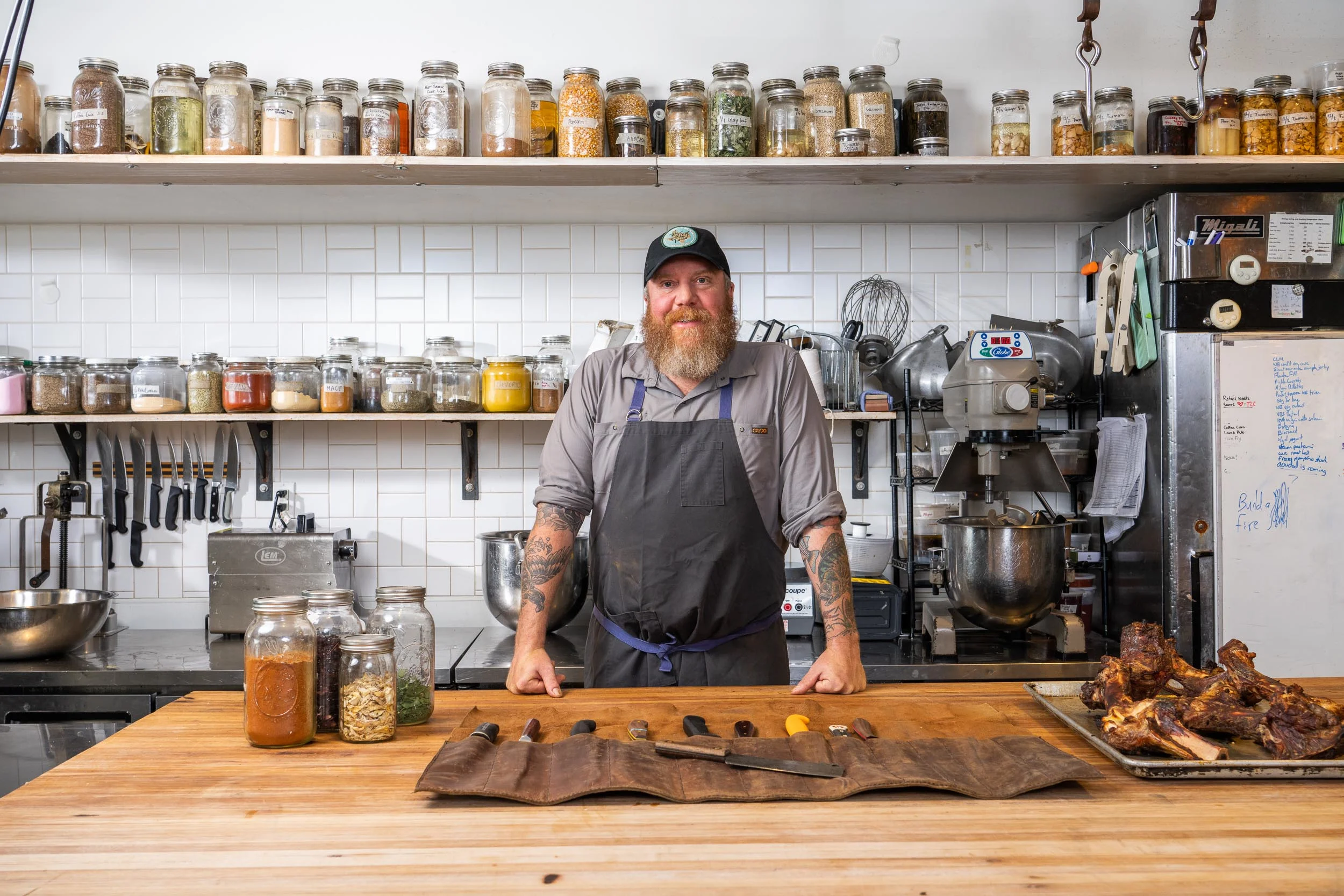
Jeff Wilson.
While hogs might be his specialty, Jesse’s no stranger to the turkey woods. This spring, he’s releasing a new book that’s solely devoted to America’s favorite game bird. The Turkey Book is based around four different turkey hunts in four regions of the county that he embarked on in the Spring of 2023 alongside hunting buddies Ben O’Brien, Jonathan Wilkins, and Chef Jean-Paul Bourgeios. In between memorable yarns about the hunts, the book lays out some of the best wild turkey recipes ever put down on paper. It also offers useful tips on field care, butchering, plucking, and skinning turkeys.

Sam Averett.
I got a sneak peek at an advance copy of The Turkey Book earlier this month, then I sat down with Griffiths to chat about the project, his cooking and butchering techniques, his favorite turkey hunting methods, and his unbounded enthusiasm for all things wild game.
As someone who didn’t grow up hunting, what was your gateway into the field to table movement?
I just love being outside. I love picking black berries. I love looking for wild mushrooms, and I love fishing—which I’ve been obsessed with my whole life. As soon as it became apparent that I could add hunting into all of that, it was a no brainer for me. Now I can spend the whole year outside.
How did you get introduced to turkey hunting**?**
As a child, I can remember stopping at a rest stop and seeing a flock of wild turkeys. It was the first time I’d ever had the urge to hunt anything. Decades later, I started hunting whitetails and hogs, but turkeys were kind of an ancillary thing. I was intimidated by the process and all the required skills that I didn’t think I had.
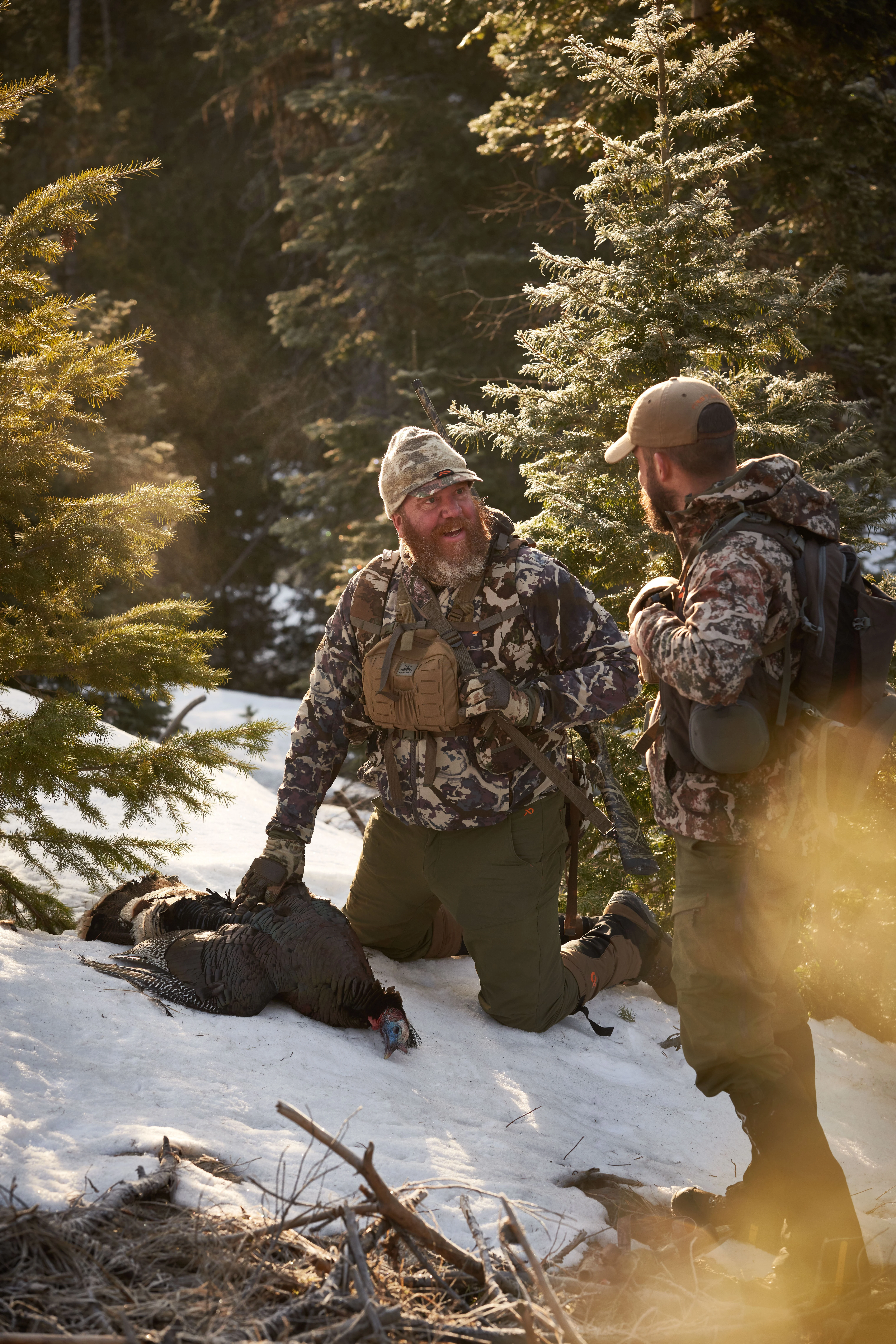
Sam Averett.
I credit my friend Ben O’Brien, who contributed greatly to this book, with helping me become a turkey hunter. I’d call Ben after screwing up on solo hunts, and he’d walk me through my mistakes. He helped me develop my skills and confidence and a sense of grace about failure, which is really important in turkey hunting.
This book took you on a unique turkey hunting journey. What states did you hunt in while you were working on it?
We went from Georgia to Oregon—from swatting mosquitoes in a swamp to being thigh-deep in snow—then to Connecticut and back down in south Texas. The most striking part of the journey was how, in each of these vastly different regions, we were going after birds that were essentially behaving the same way.
Did you notice any regional differences in the way hunters prepared their turkeys for the table?
Somewhat. Everyone is slow-cooking the legs and thighs and then quick-cooking the breasts, but I did notice that the guys in Connecticut were dousing everything in maple syrup—which I fully support. And, of course, southern turkey hunters have a real affinity for smoking their birds.
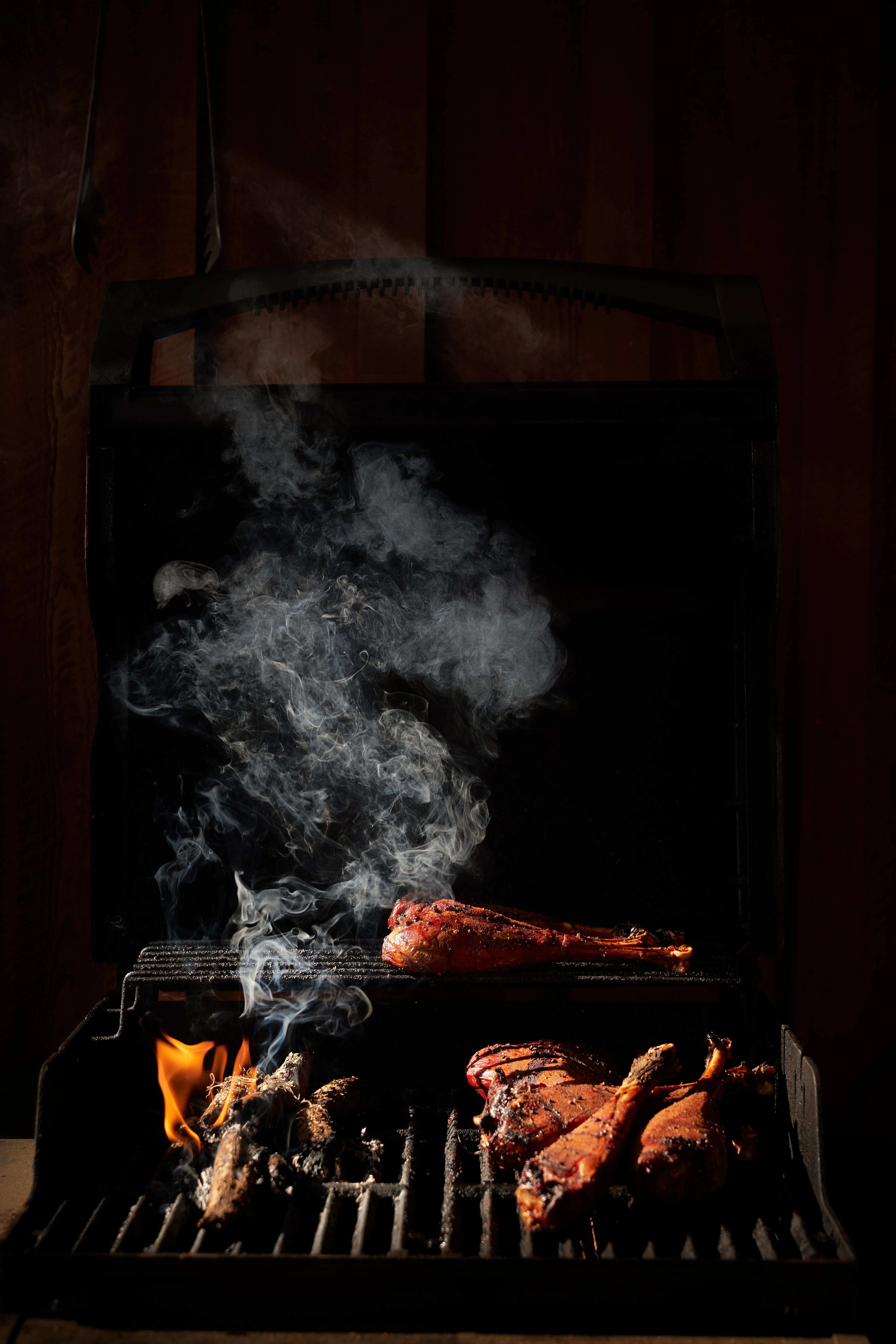
Sam Averett.
Should hunters be plucking their turkeys?
I don’t like to get on a soap box and tell people that they should prepare their wild game in a certain way. I firmly believe in utilization. I would yell at somebody for throwing the legs out, and I would always encourage everyone to keep the wings, keep the heart, and the liver and the gizzard.
But beyond that, I really want people to just do what feels best for them and what they’re comfortable with. Plucking a bird, and saving the skin at the end of that process, has some technical advantages, but there are technical advantages to skinning a bird too.
I like to pound the breast flat into what are called paillards, and then fry or grill those little thin cutlets. You’ll see a ton of recipes in the book for that, and to achieve all of that, I don’t need the skin—which means I don’t need to spend the time to pluck it. There’s a time and place for both.
What’s the best way for a home cook to prepare tougher cuts like turkey legs?
I love crockpots. I should be endorsed by the Crock-pot brand because I talk about them so much. It gives you the perfect temperature and the perfect amount of time to break down so many cuts of games—whether that’s a venison shank, a hog shank, a sandhill crane leg, or a turkey leg.
What’s your favorite cut of game to serve to kids?
The wild turkey breast is so important for that. Kids find it recognizable, but at the same time a little bit different, and it’s always delicious. For young people, in particular, it’s approachable and familiar. And it allows us to start a conversation with them about wild game, cooking wild game, and ultimately hunting wild game.
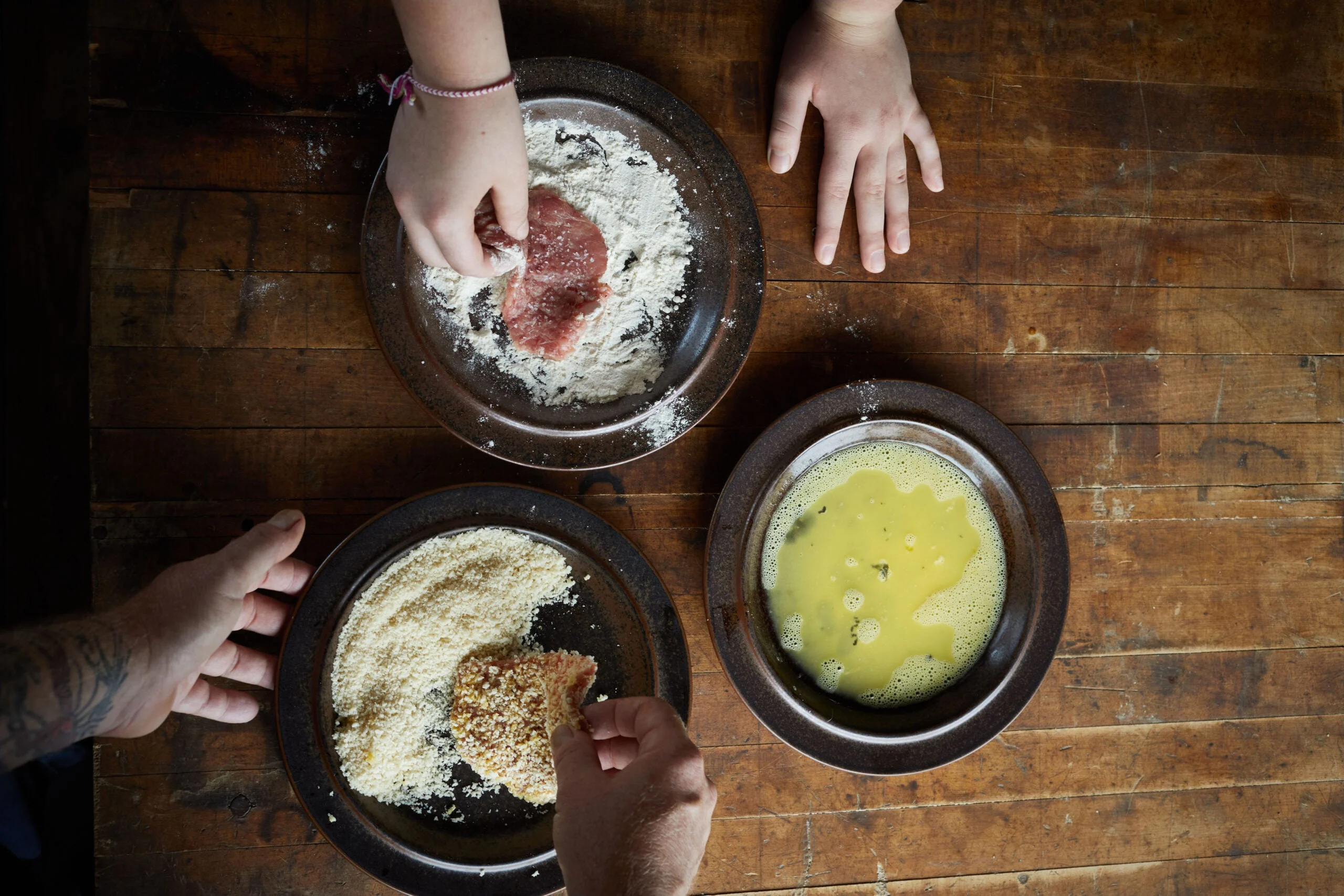
Jody Horton.
How do you prepare turkey wings?
I love the wings. They have a distinct texture and flavor. Skinning or plucking them requires some work, but it’s worth it. The best way to go about it is to cook them low and slow. Once they’re tender, you can crisp them up—either on the smoker, in the fryer, or in the oven.
Do you save the offal from the birds you kill?
All of it: The heart, the liver, and the gizzard. The livers are especially very good. They can be fried, and they make an excellent simple paté.
Sometimes I combine the heart, the liver, and the gizzard into one dish. One of my favorite recipes in the book is called the Ragu di Rigaglié. It’s an Italian pasta sauce. You grind gizzard, heart, and liver up with carrots and onions and celery and slow- cook it. Toss that with pasta, and grate a little hard cheese like parmesan on top. It’s strikingly good.
What are some of the precautions you take in the field, right after shooting a bird, to ensure that the meat stays fresh for the table?
Get the bird as cold and as dry as possible as soon as possible. If it’s a warm day, gut the bird immediately, then get it back to camp and start breaking it down—or hang it in the shade somewhere. If it’s a cold day, you might have a couple hours, but you should still gut it sooner than later. Taking those steps will really enable you to enjoy the bird more down the line.
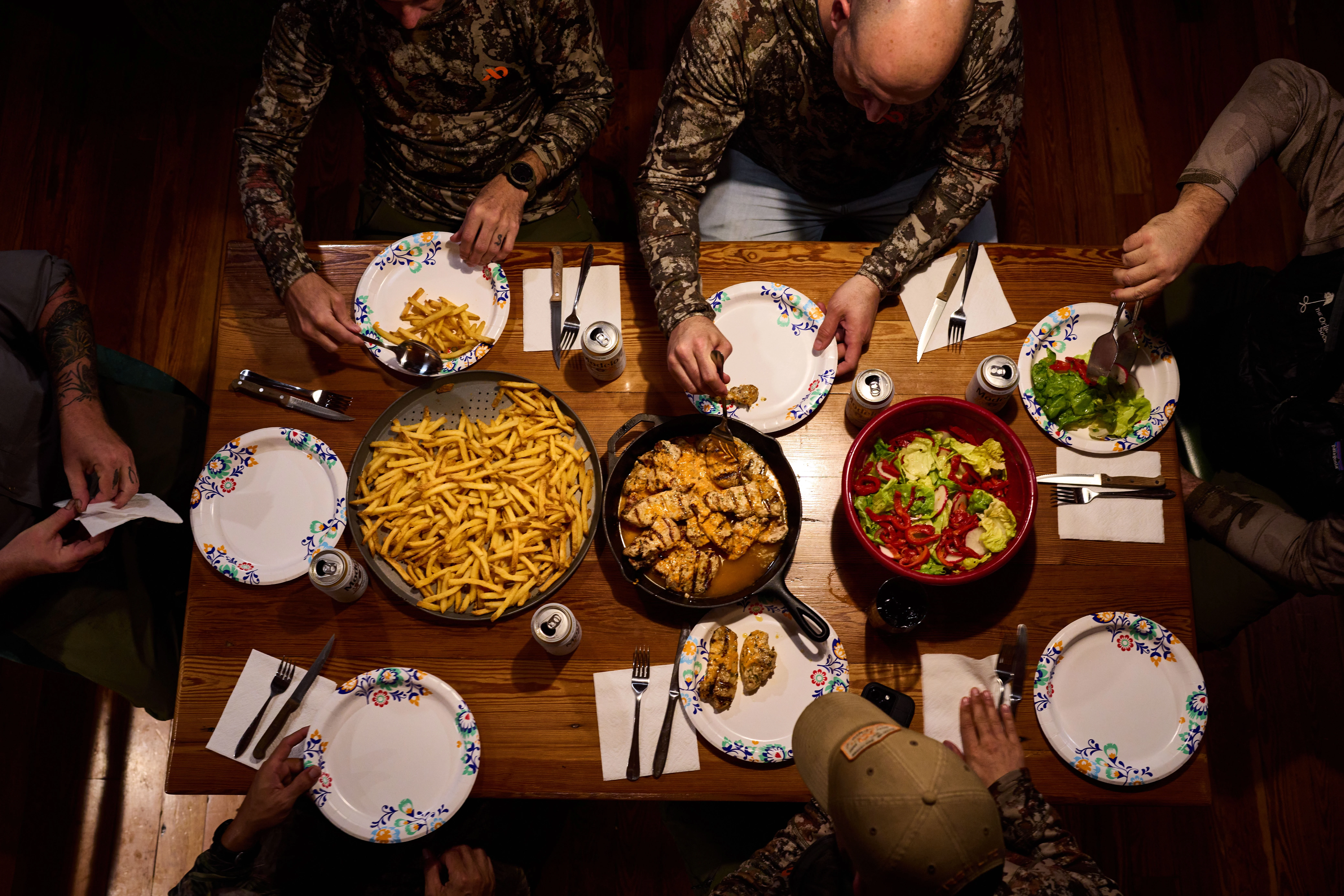
Jody Horton.
Is there a certain type of cuisine or culture that you look to for inspiration when you’re crafting your wild turkey recipes?
Without hesitation I would say Mexico. Not only because their approach to cooking the bird is great, but because of the importance that that culture places on the bird itself. They have multiple names for it. It’s a classic ingredient and an everyday ingredient there, and it’s treated with great respect. So many ingredients common to Mexico—like tomatoes, corn, peppers—go so well with turkey. Even ancient, pre-Columbian dishes like tamales, pozole, and mole, have always used turkey as a primary ingredient.
Do you make stock from your wild turkeys?
Yes. I love turkey stock. I just love stock in general. I use it almost constantly. One method I use is to take a leg quarter and put it in the crock–pot and slow cook it. I’ll shred the meat and use that for something else and keep the resulting broth for general purpose use.
Do you do much foraging while you’re out in the turkey woods?
Absolutely. Spring is a great time to forage. Foraging gets me fired up about wild food and our connectivity to that food. I’m always on the hunt for morels, though they’re pretty rare down here. I also love ramps and wild onions. In my part of Texas, we have an abundance of green cactus paddles and chiltepíns, which we call turkey peppers.
What are your essential tools for butchering a turkey?
A decent pair of scissors can really come in handy—either pruning shears or some really sharp kitchen shears, which I use a lot for anything from doves to turkeys. Beyond that, it really just comes down to your favorite sharp knife.
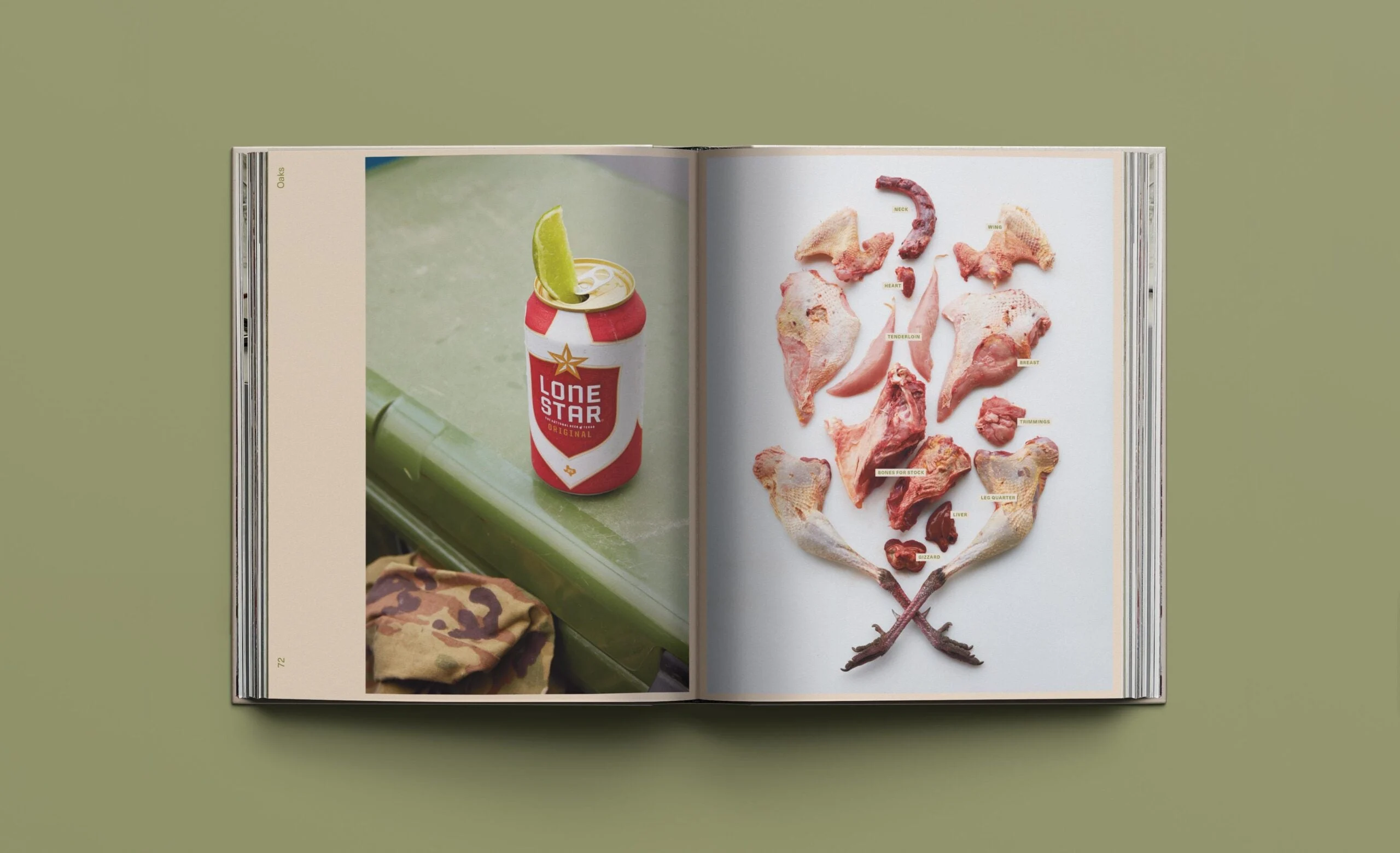
Describe your style of turkey hunting.
I’m usually going for a more studied, patient approach as opposed to a run-and-gun style of hunting. I’ll hunt from dawn to dusk if I have to. In the past I’ve been reliant on decoys, then at the end of last season, I looked back and realized that I didn’t kill a single turkey over a decoy. That’s not to say that I didn’t have decoys out, but none of the turkeys that I shot could see that decoy. They only responded to calling.
What kind of call do you use?
I went through the natural progression, starting on a box call then moving to the slate call, where I feel much more comfortable. I’m trying desperately to become better at the mouth call. This might be the year that I actually give it a shot in the field.
Where are you hunting turkeys this Spring?
I’ll be hunting them here in Texas, of course. But I’m super excited to get up to New Mexico to hunt some Merriam’s in the pines for the first time.

When can folks buy the book?
You can buy it on our website thewildbooks.com
. Those who purchase an NWTF membership or renew an existing one can save $20 the book. We also have custom slate calls, hats, and T-shirts. It’s all going to be available by early March.
Read Next: Q&A With World Cutdown Calling Champion Forrest Carvajal
Stay tuned in the coming days as we share a few of our favorite recipes from the book including turkey and dumplings and turkey “Wellington”.

